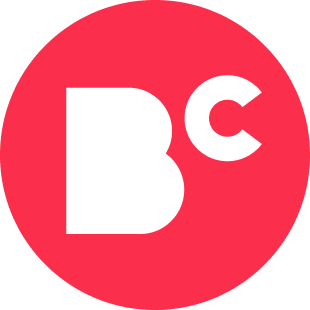Full-Stack Development Career Track
Writer
Editor
Reviewer
Writer
Editor
Reviewer
BestColleges.com is an advertising-supported site. Featured or trusted partner programs and all school search, finder, or match results are for schools that compensate us. This compensation does not influence our school rankings, resource guides, or other editorially-independent information published on this site.
Find the program that's right for you
Learn new skills quickly with a bootcamp, or earn a degree from a traditional college.
Answer a few questions to get matched with a bootcamp that fits your needs.
Explore accredited colleges to get matched with the best program for you.
- Over half of all web developers are full-stack web developers.
- Full-stack web development includes both front-end and back-end development.
- Front-end web development covers the part of the website that the user can see and interact with.
- Back-end web development covers the part of the website that users cannot see and interact with, such as the server and databases.
The full-stack web development career path often starts with the position of junior web developer, junior front-end web developer, junior back-end web developer, or junior full-stack developer. These are all entry-level jobs for web developers at the start of their careers.
Web developers may start out as front-end or back-end developers and move on to become full-stack developers as they acquire more knowledge of the other domain. They may also start out as full-stack developers.
The easiest pathway to a career in full-stack development starts with a background in HTML, CSS, and JavaScript for front-end development. Students can learn these skills within a few months through a web development bootcamp. Web developers who take this path can pick up new skills in back-end technologies in order to broaden their capabilities and move on to full-stack development positions.
What Is Full-Stack Development?
You may still be wondering, what is full-stack development? Full-stack development includes the whole range of web development, which is made up of two domains: front-end development and back-end development. Full-stack development encompasses both.
Front-end development includes developing the parts of a website that a user can see or interact with. For example, the user can interact with the navigation bar, browse through the site's pages, and read the content. This is all on the website's front end and is part of front-end development.
Back-end development includes the development of the parts of a website that the user cannot see or interact with. For example, the user cannot directly interact with the database or the server that powers the website. Those things fall under the domain of back-end development.
Find the Right Web Development Bootcamp For You
What Do Full-Stack Developers Do?
According to Stack Overflow, 55% of web developers consider themselves full-stack developers. So what does a full-stack developer do? These web developers develop both the front-end and back-end aspects of a website. They work on everything from the header and footer to the navigation menu to accessing a database to create pages of content.
Full-stack developers differ from software engineers in the coding languages that they use and the applications they work on. A full-stack developer works on web apps, while software developers create software and native apps that we use in everyday life. Although some companies call their web developers "software engineers," most software engineers work on creating software programs that can run on operating systems such as Windows, Mac OS, or Android.
Full-Stack Development Career Outlook
You might be wondering, "Is full-stack development a good career?" Yes, full-stack development is a rapidly growing career field that pays well. The number of jobs for web developers and digital designers is growing faster than average. The U.S. Bureau of Labor Statistics (BLS) projects that job opportunities for these workers will increase by 13% from 2020-30.
According to the BLS, web developers and digital designers earned a median of $77,200 in 2020. Payscale reports the average full-stack developer salary as $75,060 per year. Those with less than one year of experience typically earn the least, while those with 20+ years of experience earn the most.
The amount you can expect to earn varies by location. You can usually expect to earn more in areas with a higher cost of living. According to the BLS, the highest-paying states for web developers in 2021 were Virginia ($103,930), Washington ($101,920), Rhode Island ($99,940), Maryland ($96,460), and Washington, D.C. ($95,180).
Full-Stack Development Career Paths
Several career paths fall within the realm of full-stack development. Web developers can choose to specialize in front-end or back-end development, or they can work as full-stack developers. They can also choose to focus on game development or mobile development.
Full-Stack Developer
Full-stack developers develop all parts of a website. They need to know HTML, CSS, and JavaScript for the front end, as well as technologies such as PHP, Python, or Ruby for back-end development. Some full-stack developers specialize in a certain technology, such as Python, while others try to learn as many technologies as possible. You can prepare for a career as a full-stack developer by attending a bootcamp or earning a degree in computer science or computer programming.
$75,060
Game Developer
Game developers specialize in programming video games for console, PC, or mobile gaming. They create a game engine that powers the game and may be involved in animation, level design, character design, and testing. You can prepare for a career as a game developer by taking a game design bootcamp or earning a college degree in game design.
$83,870
Front-End Developer
Front-end developers create the part of a website that users can see and interact with. They divide the content up using HTML and format it with CSS stylesheets. They may use JavaScript to add interactive elements. You can prepare for a career as a front-end developer by taking a front-end development bootcamp. You may also choose to earn a four-year degree in computer science or computer programming.
$77,170
Back-End Developer
Back-end developers work on the part of the website that users can't see or interact with. They program server-side interactions such as saving data to a database. They need to know how to program in Python, Ruby, PHP, or another language used in back-end web development. You can prepare for a career as a back-end developer by taking a full-stack web development bootcamp, which includes both front-end and back-end technologies. You can also earn a bachelor's degree in computer science or computer programming.
$87,010
What Kind of Skills Do Full-Stack Developers Need?
Full-stack developers need many skills to be successful. They need to know how to design the front end of a website using HTML, CSS, and JavaScript, as well as the back end using Python, Java, PHP, Ruby, or another back-end programming language.
Programming Languages
| Name of Language | Description |
|---|---|
| HTML | HTML is the backbone of every website. HTML is a markup language that helps browsers determine how to display the content on a site. For example, text within an H1 tag is typically bigger than the rest of the text on the page. |
| CSS | CSS gives web developers more flexibility when it comes to formatting web pages. They can select specific fonts, set the text height to a certain number of pixels, change the color of the text, and much more. CSS allows developers to name certain parts of the page and apply attributes to the text in that section using that name. |
| JavaScript | JavaScript is a programming language that adds interactivity to websites. For example, JavaScript can be used to enlarge a photo when a user hovers over it or clicks it. Adding JavaScript to a website can really enhance the user's browsing experience. |
| Name of Language | Description |
|---|---|
| Python | Python is a general-purpose language used in back- and front-end development. Its frameworks are used in front-end, making it a favorite for full-stack developers. It also is known for its readability and vast libraries. Many beginners start by learning Python. |
| Java | Java is a back-end programming language that is commonly used in business software development. It is not as easy to learn as Python and Ruby. Some companies use Java for their back-end web development, but it's not as commonly used as Python, PHP, and Ruby. |
| PHP | PHP is a scripting language that is used in back-end web development. Running PHP code often results in dynamically-generated HTML, which is what the browser reads and understands. |
| Ruby | Ruby is a back-end web design language that runs on a server, not in the browser. This language makes programming faster since it is a fairly easy language to learn and use. |
Design Skills
Although the job of web designer can be separate from a web developer, there is some overlap. Web developers will do a better job if they understand what makes a site look good. From choosing the right typeface to making sure there is enough white space to balance the images, graphic design skills come in handy for web development.
Attention to Detail
Paying attention to even the smallest details can help users navigate the website and have a better user experience. Web developers should pay attention to the aesthetics of the site, making sure that it appeals to the user visually so that they will spend more time on the site.
Is a Career in Full-Stack Development Worth It?
A career in full-stack development is worth it if you have the personality for this type of work. Full-stack developers should be creative, open-minded, and eager to learn. They should also have strong communication and time management skills. They should not get frustrated easily and love a good challenge.
If you attend a full-stack web development bootcamp, you'll graduate with the technical skills you need in three to six months. This allows you to start your new career much more quickly and for far less money than if you pursue a bachelor's degree. Depending on the cost of the bootcamp, it could easily pay for itself within a year.
According to Glassdoor, some of the top companies hiring full-stack engineers are Cognizant Technology Solutions, IBM, Revature, Infosys, and Fidelity Investments. Google, Amazon, J.P. Morgan, and Apple are also high on the list.
Frequently Asked Questions About Full-Stack Development Careers
What education is required for a full-stack developer?
Although some employers prefer candidates with a bachelor's degree, graduating from a full-stack web development bootcamp is often enough to qualify for an entry-level full-stack web development job. These bootcamps teach both front-end technologies such as HTML, CSS, and JavaScript and back-end technologies such as Python, Ruby, or PHP.
Most full-stack development bootcamps pick one back-end technology to teach during the course. However, some do teach multiple languages. Consider which languages the employers you want to work for are seeking before enrolling in a bootcamp.
What is Python full-stack?
Python full-stack is using the Python programming language in back-end development as part of the full-stack web development process. Python is one of the easiest programming languages to learn, and it is in demand, so it's a good choice for beginning web developers. Other back-end web development languages include Java, PHP, and Ruby on Rails.
If someone was developing a website with Java, they might say that it is "Java full-stack." The language you use in the back-end is the language you would use to identify the stack.
Is being a full-stack developer stressful?
Any job can be stressful. It depends on the circumstances. If you love troubleshooting and don't get stressed when things don't work right, you probably won't get stressed over the actual coding. However, some people find it very frustrating and stressful when something isn't working and they can't figure out why.
Relationships can also make a job stressful. You are much less likely to be stressed if you have a great boss and co-workers.
What language is best for full-stack development?
Python and Ruby are the easiest to learn of the languages discussed in this article, so they are good choices for new developers. JavaScript is easy to learn and can be used in front-end and back-end development. If you want to work with WordPress sites, you'll need a working knowledge of PHP since WordPress runs on PHP.
If you're building a site from scratch, you can choose which language to use unless your employer makes that decision for you. When deciding which language to learn first, it's a good idea to find out what the employers near you are using.
Explore More Bootcamps Resources
View all
Full-Stack Web Development Bootcamps: A Complete Guide

How Much Can You Earn as a Full-Stack Developer in 2023?






